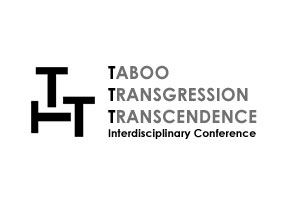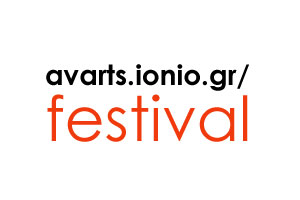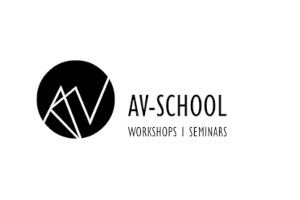- Summary - Objective of the Study
This study looks at how environmental photographs are digitally altered, with an emphasis on semiotic analysis, the use of digital photo editing tools and their application in the educational process. The transformation of images through commercial and open source software affects the semiotics of photography, modifying the relationship between reality and representation. Drawing on the theories of Barthes, Flusser and Benjamin, the study explores how digital processing redefines the interpretation of photographic images. The research is conducted with the participation of students from the Department of Photography and Audiovisual Art at the University of West Attica, who are asked to digitally intervene in photographs of the natural environment and analyse the aesthetic and semiotic changes that result from this intervention.
- Theoretical and Conceptual Framework
The link between image, meaning, and reality has changed as a result of the digital transformation of images, which has made it possible to reconfigure the photographic story using sophisticated software (Boeriis, 2021, p. 65). According to Barthes ([1980] 2018, p. 45), the semiotics of digital photography highlights how digital processing alters an image's semiotic structure in addition to its aesthetic appeal. Benjamin's views on the loss of the artwork's "aura" in the era of technical reproduction are supported by Flusser's (2000) assertion that "technical images" are coded forms of information that can be altered. However, each intervention creates new semiotic patterns, according to D'Armenio and Dondero (2024, p. 78), who characterize digital processing as a new language system.
Digital transformation of photographs refers to the process of modifying the lighting, colour, texture and structure of photographs through digital image processing software. The link between image and reality can be reconfigured through the development of new narrative methods made possible by these interventions. In the realm of environmental photography, technology interventions can serve as a tool for a critical approach to the relationship between humans and the natural environment, or they can be used to enhance the visual narrative. Digital alterations thus constitute a dynamic process for altering visual reality and how it is interpreted.
- Teaching Approaches and Methodology
This study focuses on teaching digital image processing and semiotic analysis of photography to university photography students. Inquiry-based learning is the foundation of the teaching methodology, which asks students to experiment with image editing programs such Adobe Photoshop, GIMP, and Darktable and analyze the image's aesthetic and semiotic changes. At the same time, students analyze their own environmental photos while considering the results of their interventions, utilizing experiential learning in the process.
The methodology blends quantitative and qualitative methods. First, semiotic shifts are highlighted by comparing the original and altered images through content analysis. Students' opinions on the significance of digital processing in photographic storytelling are also recorded through semi-structured interviews and questionnaires. Lastly, a case study is employed in which students examine the work of photographers who modify environmental images using digital techniques.
This integrated method intends to increase students' skills in visual analysis and creative editing, as well as to improve their critical thinking on photographic semiotics.
- Conclusions
The data analysis verifies that the semiotic structure of the images is significantly changed by digital processing, opening up new aesthetic and interpretive possibilities. Learners gained a critical understanding of photographic representation and realized that digital photography is a system of visual communication with many levels of meaning rather than merely an objective record.
Open source technologies also made it easier to apply new methods in an exploratory and participatory manner. Thus, with digital photography, the study emphasizes how technology can work as a catalyst to create new visual and interpretative processes.
Bibliography
Barthes, R. ([1980] 2018) Camera Lucida: Reflections on Photography. New York, NY: Hill and Wang.
Bate, D. (2020) Photography: The Key Concepts. 2nd edn. London: Bloomsbury.
Benjamin, W. (2020) The Work of Art in the Age of Mechanical Reproduction. London: Penguin Books.
Berger, J. (2019) Ways of Seeing: Digital Edition. London: Penguin Books.
Boeriis, M. (2021) Semiotics of Photography: Theory and Analysis. London: Routledge.
D’Armenio, L. and Dondero, M. (2024) Digital Semiotics: Visual Narratives and Meaning in Contemporary Photography. Cambridge, MA: MIT Press.
Flusser, V. (2000) Towards a Philosophy of Photography. London: Reaktion Books.
Huang, Y. (2024) Technical Images and Digital Reality: Rethinking Flusser in the 21st Century. New York, NY: Columbia University Press.
Serafinelli, E. (2024) Digital Visual Culture: Photography and the Transformation of Meaning. London: Palgrave Macmillan.
Dimitra Gounari is a PhD student in the Department of Sound and Image of the Ionian University. She is an adjunct professor at the Department of Photography and Audiovisual Arts of the University of West Attica in Greece and a teacher in the field of applied arts in secondary education. Additionally she is an examiner of the IB DP Visual Arts course, while she participates in conferences, exhibitions, writes articles in magazines and curates exhibitions. Her artwork has been awarded and published and is in private and public collections.
Dr. Agnes Papadopoulou is Associate Professor in the Department of Audio & Visual Arts at the Ionian University of Greece. Her research and teaching activity pertains to art didactics, creative technologies, art philosophy and aesthetics, ethics and ecological thought. In her publications she is investigating the fusion of art and technology, the creation of narratives through new media, and modern approaches to learning and educational practices. She is the Scientific Director of the Pedagogical and Didactical Sufficiency Program and one of the three members of the Ionian University Teaching and Learning Center. She is also the Coordinator of the Ionian University Unit of Counseling, Psychological and Social Services and the President of the Ionian University Equity, Inclusion and Accessibility Committee.
Back





